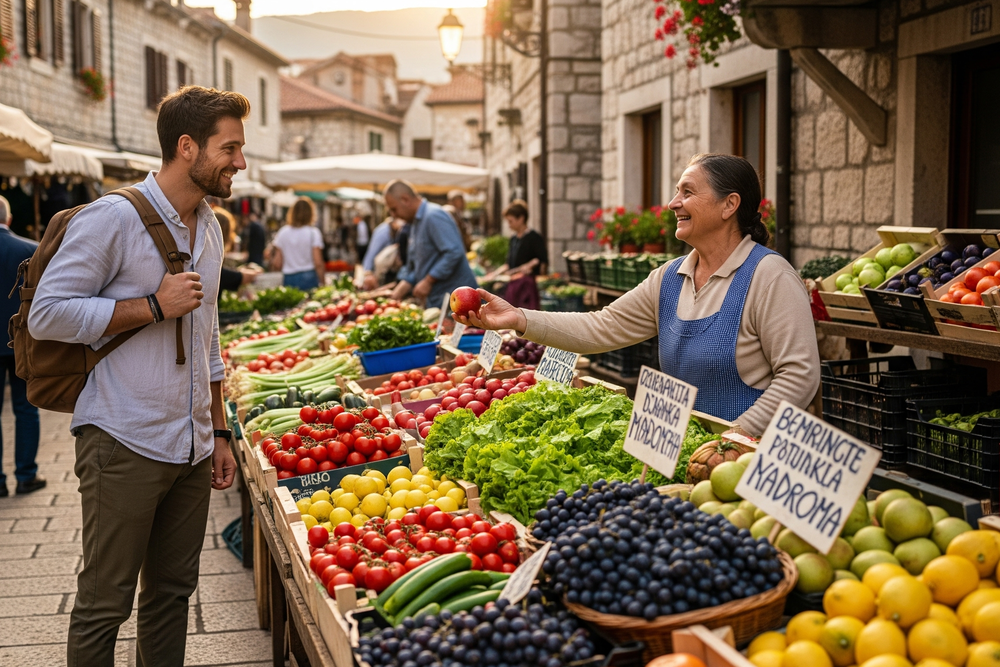The Rise of Slow Travel: How to Truly Immerse Yourself in a Destination
Liam Reed
2025-10-11
6 min read

In a world that often prizes speed and efficiency, the way we travel has frequently mirrored this ethos. For decades, the goal for many was to see as much as possible in the shortest amount of time, turning vacations into a whirlwind tour of landmarks and photo opportunities. Now, a growing movement is pushing back against this hurried approach, championing a philosophy known as "slow travel." This isn't just about taking longer trips; it's a mindset shift that prioritizes connection, immersion, and meaning over simply checking items off a list.
What is Slow Travel?
At its core, slow travel is about experiencing a destination with depth rather than breadth. It encourages travelers to set aside the frantic itinerary and instead settle into one place for a longer period. This could mean spending a week in a single village instead of visiting five cities, or dedicating an entire trip to exploring one region of a country. The focus shifts from seeing to experiencing, from observing to participating. It is a conscious choice to trade a packed schedule for the unscripted moments that foster genuine connection with a place and its people. This approach is a direct response to the pressures of modern tourism, which can often feel transactional and superficial. Slow travel invites you to unpack your bags, both literally and metaphorically, and allow the rhythm of a place to guide your days. It’s about learning the name of the local baker, finding a favorite park bench, and understanding the nuances of a culture that can only be revealed over time.

The Benefits of a Slower Pace
One of the most significant advantages of slow travel is the opportunity for true cultural immersion. When you rush from one attraction to another, you remain on the surface, interacting primarily with the tourism industry. By staying in one place, you have the chance to engage with the local community on a deeper level. You can shop at neighborhood markets, take a language class, or volunteer for a local project. These interactions provide authentic insights that a guided tour simply cannot offer. You begin to understand the local perspective, traditions, and way of life, transforming your trip from a simple visit into a rich learning experience. Slow travel is also inherently more sustainable. The traditional model of tourism, with its frequent flights, high turnover of hotel rooms, and concentration of visitors in specific hotspots, places immense strain on local infrastructure and the environment. By staying longer in one location and often choosing smaller, locally-owned accommodations, slow travelers reduce their carbon footprint. They also contribute more directly to the local economy, as their spending is distributed among small businesses rather than large international corporations. This approach supports the community in a more meaningful and less disruptive way. Perhaps most importantly, slow travel offers profound personal benefits. Constantly being on the move can be exhausting, leaving you feeling like you need a vacation from your vacation. A slower pace allows for genuine rest and reflection. It creates space for spontaneity—the unplanned afternoon spent reading in a café, the conversation struck up with a stranger, or the discovery of a hidden trail. These unhurried moments reduce stress and allow for a deeper connection with yourself and your surroundings, leading to more lasting and meaningful memories.
How to Embrace Slow Travel
Adopting a slow travel mindset is accessible to anyone, regardless of trip length or budget. It begins with a shift in planning. Instead of asking, "How many countries can I visit in two weeks?" ask, "How deeply can I get to know this one city or region?" Choose a home base and plan day trips from there, rather than packing and unpacking every night. Consider renting an apartment or staying in a guesthouse, which encourages a more domestic, integrated experience. Once you arrive, resist the urge to fill every minute with activities. Leave entire days open for wandering without a destination. Use public transportation to get a feel for the daily commute and observe everyday life. Eat where the locals eat, even if it means stepping outside your comfort zone. Make an effort to learn a few key phrases in the local language; this small gesture can open doors to more meaningful connections. Focus on activities that foster immersion. Instead of just visiting a museum, take a cooking class to learn about the local cuisine. Rather than just hiking a popular trail, find a local guide who can share stories about the area’s history and ecology. The goal is to participate, not just to spectate. The rise of slow travel reflects a collective desire for more authentic and sustainable ways to see the world. It’s a reminder that the true value of travel isn’t measured by the number of stamps in a passport, but by the quality of the connections we make—with new places, new people, and ourselves. By slowing down, we give ourselves the gift of a richer, more memorable, and truly transformative experience.


